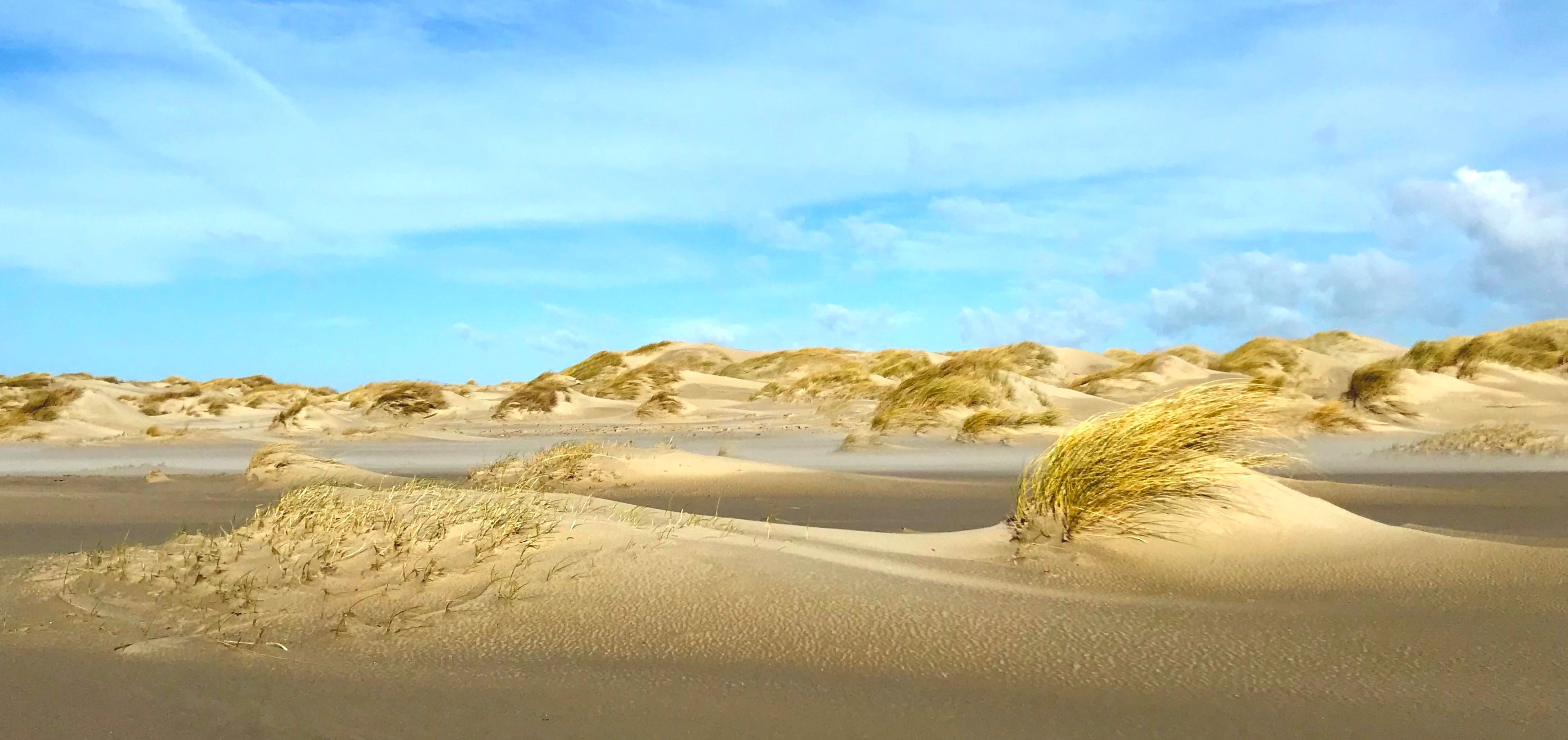Small steps, big leaps – how marram grass builds dunes
The size and shape of dunes varies greatly around the world: in Europe they're tall and narrow, while in the US they're low and wide. A new study has found that this is partly because dunes are constructed by plants with different ‘movement strategies’ determining the shape of the dune. The study was carried out by ecologists from Radboud University, the Royal Netherlands Institute for Sea Research (NIOZ) and the University of Groningen. The findings, which will be published in Nature Communications on 14 June, could be useful for coastal landscape rehabilitation projects.
The coastline is a difficult place for plants to survive, thanks to all the salt and crashing waves. Marram grasses have a special survival mechanism to cope with this: they catch drifting sand and build a dune, which enables them to eventually escape the effects of the sea.
But why is it that our European marram grass constructs 15-metre dunes, while its American counterpart doesn’t get higher than 6 metres? That was the question that researchers, including Valérie Reijers, a PhD candidate at Radboud University, wanted to answer. They looked at how European and American marram grasses grow along the coast of Schiermonnikoog and in North Carolina.
‘Moving’ plants create the landscape
“Marram grasses create underground rootstocks which can develop new shoots. European marram grass appears to have a specific strategy in which short rootstocks create new shoots close to the older one, but occasionally there will be a long underground runner. This striking pattern of movement has previously been identified in other organisms, including mussels, albatrosses, sharks, bacteria and even humans,” says Valérie Reijers, lead author of the article.
When searching for food, many animals move in a random pattern in which small movements alternate with a significant relocation, known as Lévy movements. “It’s a sort of natural law that has emerged in different organisms,” says Reijers. “It’s striking that these ‘movements’ apparently also exist in plants and are so significant to the way in which they construct their landscape.”
The use of Lévy movement enables European marram grass to capture a lot of drifting sand, in the most efficient way, with a minimal investment in its underground root network. American marram grass captures more sand by growing in a dispersed way, but this requires much more energy because the underground rootstocks have to travel a much greater distance. This results in a lower and wider dune.

Self-regenerating dunes
Coastal landscapes are very important – they provide a habitat for many plant and animal species, capture CO2 in the soil and, perhaps most importantly of all, they slow or break waves during storm surges. “Natural coastal landscapes such as salt marshes and dunes are declining around the world,” says Tjisse van der Heide, a researcher at NIOZ and professor of coastal ecology at the University of Groningen.
“Attempts to restore these landscapes are often unsuccessful. Plants are often uprooted by waves before they can establish themselves and capture any silt or sand. Now that we understand the spatial organisation of coastal plants, the next step is to apply these findings to regeneration projects so that we can help plants get established,” says van der Heide.
On 4 July Valérie Reijers will be awarded her PhD on ‘A Song of Sand and Mud: How plant-mediated feedbacks dictate landscape formation and dynamics of barrier islands’.
| Last modified: | 11 May 2020 2.31 p.m. |
More news
-
03 April 2025
IMChip and MimeCure in top 10 of the national Academic Startup Competition
Prof. Tamalika Banerjee’s startup IMChip and Prof. Erik Frijlink and Dr. Luke van der Koog’s startup MimeCure have made it into the top 10 of the national Academic Startup Competition.
-
01 April 2025
NSC’s electoral reform plan may have unwanted consequences
The new voting system, proposed by minister Uitermark, could jeopardize the fundamental principle of proportional representation, says Davide Grossi, Professor of Collective Decision Making and Computation at the University of Groningen
-
01 April 2025
'Diversity leads to better science'
In addition to her biological research on ageing, Hannah Dugdale also studies disparities relating to diversity in science. Thanks to the latter, she is one of the two 2024 laureates of the Athena Award, an NWO prize for successful and inspiring...
